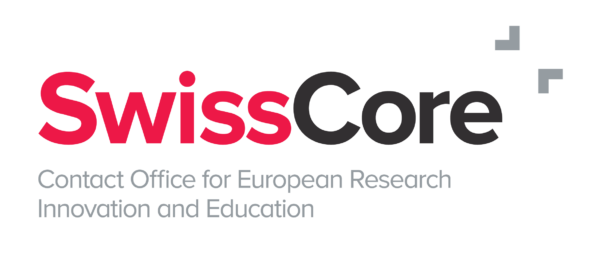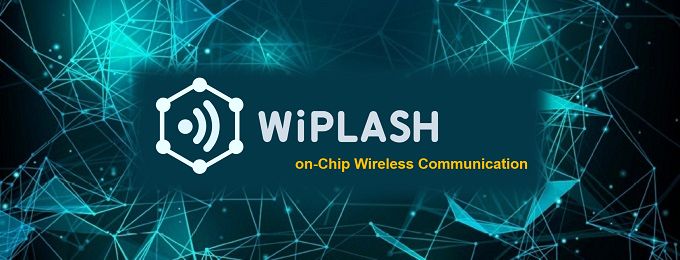Since October 2019, the EU-funded project WiPLASH is delivering on disruptive wireless on-chip communication. And Swiss knowledge is a crucial part of it.
Computer architecture and integrated circuit design are the sort of topics that you rarely hear about in your everyday life; but they play a crucial role in the performance of all kinds of computers. Without them, you would not be reading this article right now. Researchers in this domain seek efficiency and increasing performance to keep up with demanding technologies like artificial intelligence (AI) or high-performance computing (HPC). The WiPLASH project, funded under the last EU framework programme for research and innovation, Horizon 2020, tackles exactly these issues. By integrating new disruptive technologies on chips, the WiPLASH researchers optimise and improve computing performance. Seven parties constitute the research consortium, which is coordinated by the Universitat Politecnica de Catalunya. Other academic members include the Universita di Bologna, the Universität Siegen, the Technische Hochschule Aachen and finally the Swiss Federal Institute of Technology in Lausanne (EPFL). Two private partners are also part of the project: the German company Amo and Zürich-based IBM Research.
At EPFL, it is the Embedded Systems Laboratory (ESL), headed by Professor David Atienza, which is involved in the project. The laboratory conducts research combining integrated circuit (IC) design and computer architecture for demanding applications. Dr. Alexandre Levisse, IC design expert, and Dr. Giovanni Ansaloni, computer architecture expert, join forces to deliver on one of the work packages of WiPLASH.
Initially, the project originated from the network of European IC design and computer architecture researchers, and from their wish to leverage new technologies to allow greater reconfiguration possibilities in processors. Traditionally connections within chips and between chips are made with wires. Once wired, no changes in the circuits can be made, limiting the performance of processors for different applications. New technologies like graphene antennas open the door to wireless communication on chips. Thanks to the high frequency (in the terahertz order of magnitude) at which they can operate, they can transmit large amounts of data. This efficient wireless communication allows for greater reconfiguration possibilities of the circuits for different applications. Having access to this technology led to the idea of developing hybrid circuits that combine wired and wireless communication. Thanks to the wireless communication, the circuits can be reconfigured for different use cases, thus optimising their performances. This increase in performance is especially relevant for AI applications, as they require transmitting large quantities of data and therefore need greater efficiency of processors. As such, on-chip wireless communication is an enabler for increasingly demanding AI. On top of that, the project promotes and develops European know-how and competencies in circuit design in general. This is essential to ensure European independence and control over the hardware that supports crucial high performance-computing and AI systems. European technological sovereignty in this domain is critical.
In the project, the Embedded System Laboratory of EPFL focuses on the development of a simulation framework. The goal is to be able to evaluate, via simulations, the performance gains of wireless communication. In close collaboration with the other partners of the project, ESL researchers are enabling a feedback loop, where they simulate the new wireless communication as well as additional innovative circuit elements. They then evaluate their performance in terms of speed and energy needs. This allows the other partners, who develop the components and work on their integration, to know what to change and where to focus their effort on. This co-design strategy benefits all and ensures that time and resources are spent where needed. By the end of the collaboration, ESL-EPFL will not only have helped other researchers develop new disruptive technologies, but also made available a simulation tool for industrials or researchers who wish to evaluate the gains of wireless on-chip communication for their own applications. Indeed, as their work is based on open source tools, that they have upgraded to simulate wireless communication, the generated knowledge will be freely available.
To make all of this possible, the consortium sought European funding, and was able to participate in the pilot phase of the European Innovation Council (EIC) Pathfinder, the new Horizon Europe instrument promoting disruptive technological innovation. ESL is thus one on the 31 Swiss academic and private actors to participate in 21 EIC Pathfinder projects, making the technologies of tomorrow a reality for Europe.
According to Alexandre Levisse and Giovanni Ansaloni, the international reach of Swiss research is what makes this possible. They believe that the Swiss higher education system has a unique capacity of bringing together talents from all around the world, creating interconnected microcosms of expertise. This diversity in backgrounds is a real strength in collaborative projects like WiPLASH, which involve researchers from various countries and having diverse expertise, who must apply it toward a common goal.

